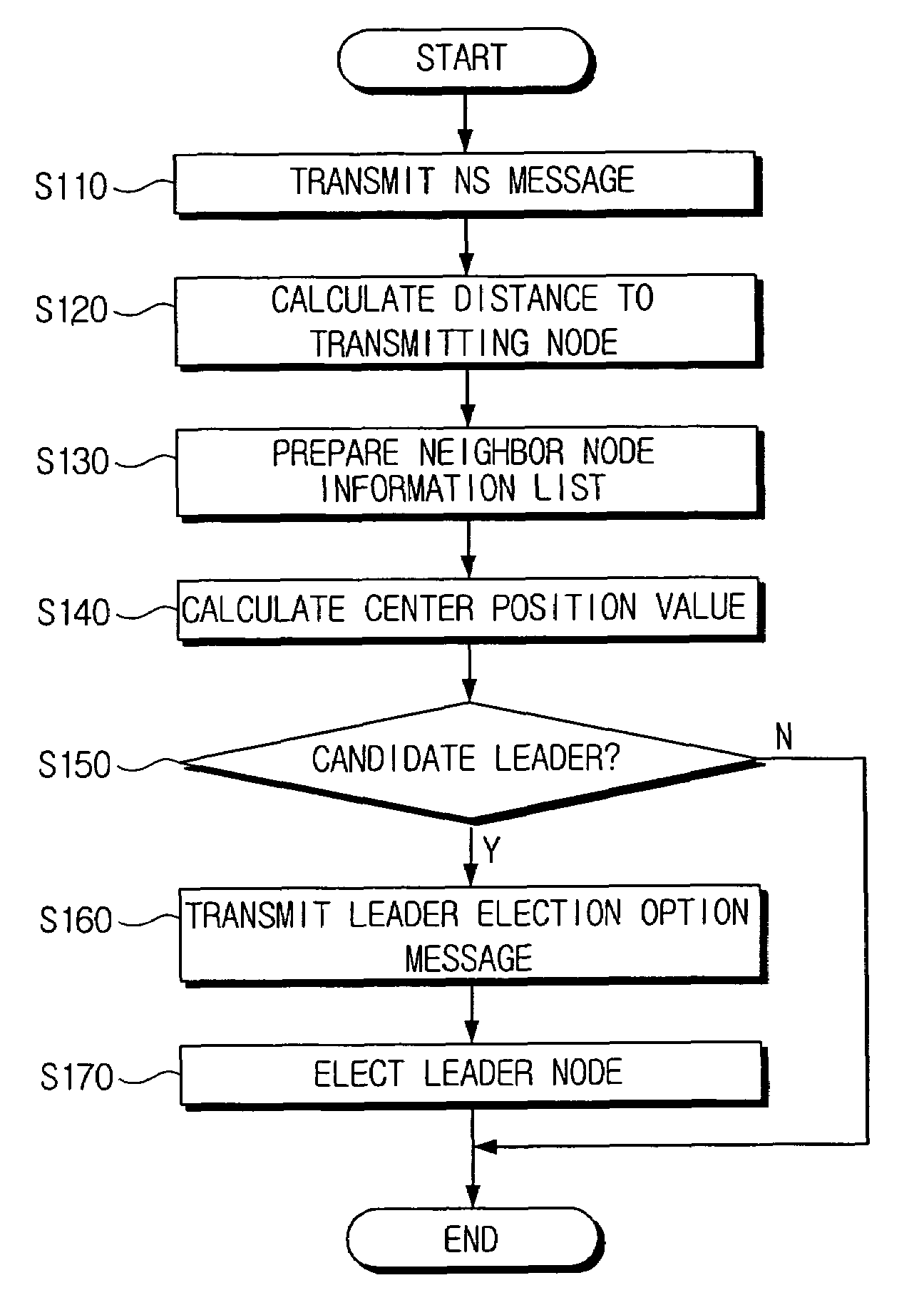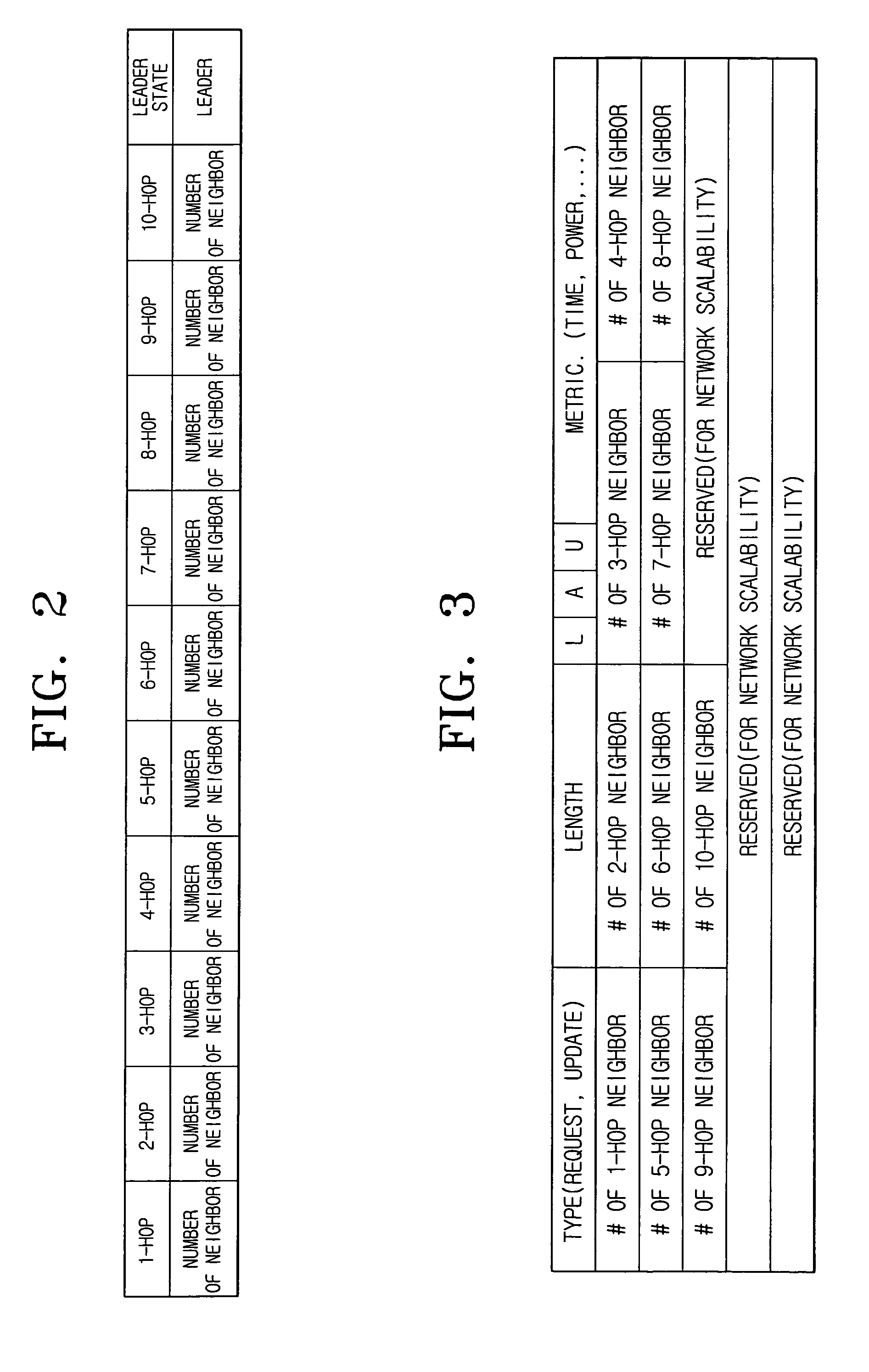Method of electing a leader in an ad-hoc network
a technology of ad-hoc networks and leaders, applied in the field of ad-hoc network leaders, can solve the problems of not being able to reflect the topology of the whole ad-hoc network, the method cannot cope with the change of the network topology, and the leader node elected by the conventional method cannot contribute to the transmission of ra messages and shorten the time for the dad performing transmission
- Summary
- Abstract
- Description
- Claims
- Application Information
AI Technical Summary
Benefits of technology
Problems solved by technology
Method used
Image
Examples
Embodiment Construction
[0040]Reference will now be made in detail to the embodiments of the present invention, examples of which are illustrated in the accompanying drawings, wherein like reference numerals refer to the like elements throughout. The embodiments are described below to explain the present invention by referring to the figures.
[0041]FIG. 1 is a flowchart illustrating a method of electing a leader node in an ad-hoc network according to an embodiment of the present invention. Referring to FIG. 1, a node, which takes part in an ad-hoc network when the network is created, generates its own address to be used in the network and transmits a Neighbor Solicitation (NS) message that includes an address generated to perform a Duplicate Address Detection (DAD), to the whole network at operation S110. Accordingly, each node receives the NS message from all nodes that take part in the network.
[0042]Each node of the ad-hoc network receives the NS message and calculates a distance to a transmitting node th...
PUM
 Login to View More
Login to View More Abstract
Description
Claims
Application Information
 Login to View More
Login to View More - R&D
- Intellectual Property
- Life Sciences
- Materials
- Tech Scout
- Unparalleled Data Quality
- Higher Quality Content
- 60% Fewer Hallucinations
Browse by: Latest US Patents, China's latest patents, Technical Efficacy Thesaurus, Application Domain, Technology Topic, Popular Technical Reports.
© 2025 PatSnap. All rights reserved.Legal|Privacy policy|Modern Slavery Act Transparency Statement|Sitemap|About US| Contact US: help@patsnap.com



